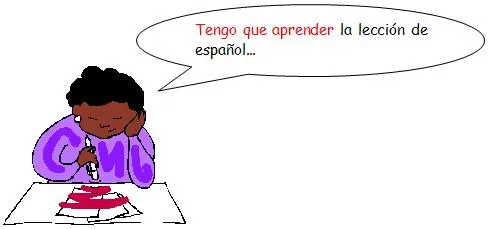In English, we use the verb "to have" and we also say "to have to". For example. "I have to go to the bathroom." We use these phrases almost daily.
In Spanish, the verb for "to have" is "tener"
We use the conjugated form of "tener" with the word "que" to say "to have to".
Let's conjugate tener first in all forms of present tense and then I will give some example sentences.
Yo tengo = I have
Yo tengo que = I have to
Tú tienes = you have
Tú tienes que = You have to
Él/ella/usted tiene = he/she/you (formal) have
Él/ella/usted tiene que = he/she/you (formal) have to
Nosotros(as) tenemos = We have
Nosotros(as) tenemos = We have to
Vosotros(as) tenéis = You all (Spain) have
Vosotros(as) tenéis que = You all (Spain) have to
Ustedes/ellos(as) tienen = You all (Latin America)/ They (masc. + fem) have
Ustedes/ellos(as) tienen que = You all (Latin America)/ They (masc. + fem) have to
Example sentences:
Yo tengo que hacer mi tarea. = I have to do my homework.
¿Tú tienes que ir a trabajar? = Do you have to go to work?
Él tiene que quedarse hasta las 4:00 = He has to stay until 4:00
Nosotros tenemos que ver esa película = We have to watch that movie.
Vosotros tenéis que comer en el restaurante "Las Palmas" = You guys have to eat at Las Palmas.
Ellos tienen que bajar las voces aquí en la biblioteca = They have to lower their voices here in the library.
I hope you enjoyed the lesson! Please don't forget to upvote if you found this content helpful and follow me for more!
The Vegan Silver Stacker
